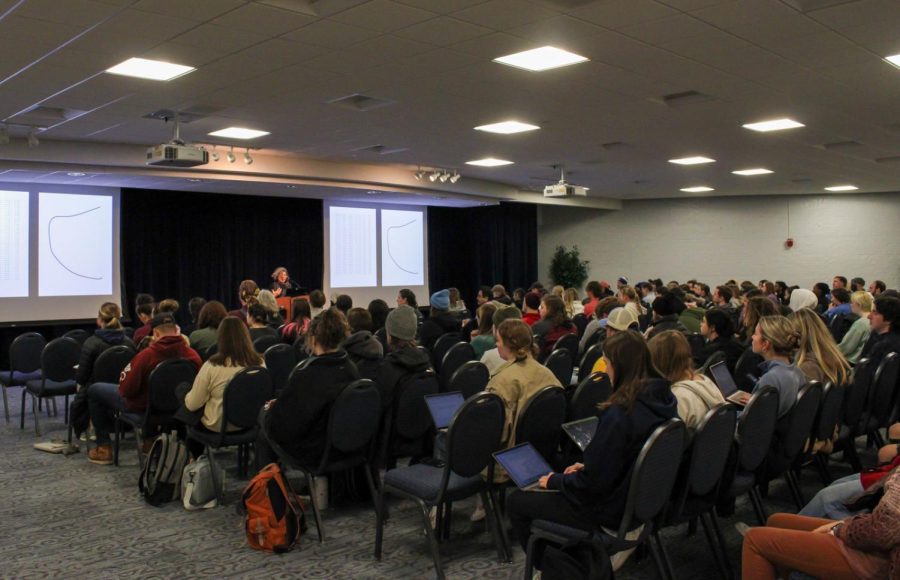Guest speaker explores systemic failure through digital art
Oct 24, 2022
Grand Valley State University’s Visual and Media Arts Department hosted guest speaker and visual artist Nayda Collazo-Llorens. At this event, she spoke about her latest projects, the inspirations for them and gave brief glimpses of her new digital projects.
Collazo-Llorens is a San Juan, Puerto Rico native and uses her roots to convey feelings or thoughts within her art. With the United States as her second home, she uses ideas from those experiences to convey deeper understanding and connections to her relationship with the Puerto Rican diaspora.
Collazo-Llorens held the position of Stuart and Barbara Padnos Distinguished Artist in Residence at GVSU from fall 2014 to spring 2017. During this time, she worked with GVSU to showcase her art in the department of art and design. Her interdisciplinary approach to art-making worked to connect to other areas of study at GVSU like writing and theatre.
Within Collazo-Llorens’ creative process, she starts each project with a plan to meet her goal of opening her audience’s minds. She may start with just a small idea and expand upon it. For instance, she may begin her drawing with just letters or numbers that she could be thinking about. As her work progresses, she sometimes implements movement and sound to create interconnectedness in digital art.
Collazo-Llorens said through her work she hopes to get audiences to think thoroughly and find messages in her pieces. She said this is especially prominent in her three-channel video installation entitled, “Rupture.”
“When I talk about ‘Rupture’ or what is rupturing, it could go from the failed systems that we are witnessing- whether it is economic, capitalism, or ecological- the breaking of these systems also allows for some sort of transformation,” Collazo-Llorens said. “I think of it as a process. It is not just rupturing to put it back together, but it is rupturing as a necessary process to open or to change things for the better.”
A piece of work that Collazo-Llorens showcased at the guest speaker event was titled “Unclassified,” which was a video she created in 2020. The piece incorporates text from a 1952 government report of UFO sightings on the western coast of Puerto Rico. She was interested in the photos and scans of those reports, which have been reproduced and photocopied over the years and said that she drew inspiration from the quality of these images.
“They show an accumulation of marks, whether that’s redaction, handwritten notes, folds, creases, stains or any leftover marks from the various types of technology used to reproduce it,” Collazo-Llorens said.
She took the scanned image of the report and ran it through Optical Character Reader (OCR) software, which converts an image of text into text that can be translated. She wanted to explore the conceptual and poetic possibilities of the inaccurate translations or marks on the page that translated into unique characters. She said she was more interested in this than the actual report of the UFO sighting.
“I was a lot more interested in thinking about uncertainty and how it could be perceived,” Collazo-Llorens said. “I was also thinking about data and coded messages as well as the shift between text as marks, abstract marks or just language.”
In Collazo-Llorens’ work, her use of digital and traditional mediums can develop and connect different elements of art. Her work can be seen on her website featuring many pieces of her art and descriptions of her work.






















